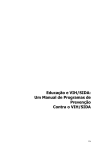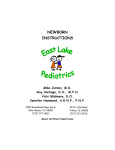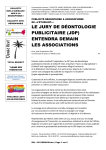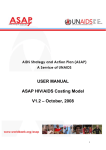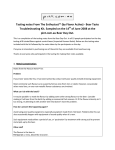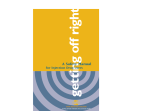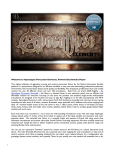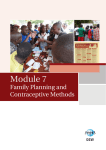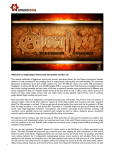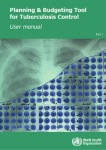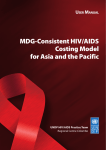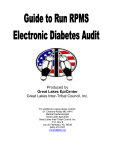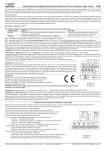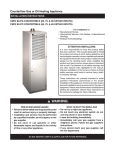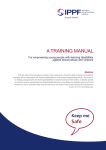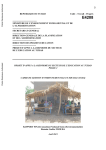Download Peer Education - Participant`s Manual
Transcript
Ministry of Community Development Mother and Child Health National Peer Education Training Manual for Adolescents PART E: HIV & AIDS Participant’s Manual 2014 0 Table of Contents Acronyms ................................................................................................................................................ 2 About the National Peer Education Training Manual for Adolescents: .................................................. 3 Session E1: Basic Facts on HIV transmission .................................................................................. 4 Session E2: Stages of HIV infection ................................................................................................ 7 Session E3: Voluntary Counselling and Testing (VCT) .................................................................. 11 Session E4: Abstinence and Delaying Sexual Debut .................................................................... 14 Session E5: Have One Sexual Partner – Being Mutually Faithful ................................................. 16 Session E6: Correct and Consistent Condom Use ........................................................................ 18 Session E7: Male circumcision ..................................................................................................... 25 Session E8: Anti-retroviral Therapy (ART) .................................................................................... 27 Session E9: Positive Living with HIV ............................................................................................. 30 Session E10: Stigma and Discrimination .................................................................................... 34 Annex 1: Part E: Reading materials ....................................................................................................... 36 Annex 2: Definitions and Concepts (Glossary) ...................................................................................... 37 1 Acronyms ADH AIDS ART ARV BBT BCC CRC FAMs FGM/C FP HIV HSV IUDs IEC KEBI LGBTI M&E MC MCDMCH MCP MOH MSM MTCT NGOs OIs PE PLA PLHIV PMTCT PPAZ RRA SDM SMART SRH UNAIDS UNESCO UNFPA USP VCT WHO YFHCs ZISSP Adolescent Health Acquired Immune Deficiency Syndrome Anti-Retroviral Therapy Anti-Retroviral Basal Body Temperature Behaviour Change Communication Convention on the Rights of the Child Fertility Awareness-based Methods Female Genital Mutilation/Cutting Family Planning Human Immunodeficiency Virus Herpes Simplex Virus Intrauterine Devices Information, Education and Communication Keep Expenses Below Income Lesbian, Gay, Bisexual, Transgender and Inter-Sex Monitoring and Evaluation Male circumcision Ministry of Community Development Mother and Child Health Multiple and Concurrent Partners Ministry of Health Men who have sex with men Mother-to-Child Transmission Non-Governmental Organisations Opportunistic Infections Peer Education Participatory Learning and Action People Living With HIV Prevention of Mother-to-Child Transmission Planned Parenthood Association of Zambia Rapid Rural Appraisal Standard Days Method Specific, Measurable, Achievable, Realistic and Time-bound Sexual and Reproductive Health Joint United Nations Programme on HIV/AIDS United Nations Educational, Scientific and Cultural Organisation United Nations Population Fund Unique Selling Point Voluntary Counselling and Testing World Health Organisation Youth Friendly Health Centres Zambia Integrated Systems Strengthening Programme 2 About the National Peer Education Training Manual for Adolescents: Background: The National Peer Education Training Manual for Adolescents is an important document for people working with young people and organisations serving youth and covers various issues affecting the development of adolescents in Zambia. The manual was developed through a process of harmonisation of existing training materials to develop a national peer education training manual that could help in- and out-of-school young people to health-related knowledge, attitudes, and life skills and their access to health services. The National Peer Education Training Manual for Adolescents is a resource document for facilitators of training for peer educators. A summarised version of the same manual is available for participants of this peer education training. Goal: To set a national standard to the content and process of peer education training for adolescents in Zambia. The training plans to equip young people with knowledge, skills and values that aid to make responsible choices and decisions about their sexual health and social relationships as well as their future destiny. Objectives: a) To increase knowledge and understanding of the changing physiological and sociocultural environment; b) To explain and clarify feelings, values and attitudes in the changing environment; c) To develop and strengthen various types of skills; d) To promote and sustain risk-reducing behaviour; e) To encourage career and value development, and f) To promote negotiation and decision-making power of the young people of Zambia. Parts of the manual: Part A: Skills for peer educators (This section is provided to facilitators only.) Part B: Environment around a young person Part C: Life Skills Part D: Healthy Living Part E: HIV and AIDS 3 Session E1: Basic Facts on HIV transmission Session outcome: At the end of this session you should able to understand and discuss issues related to HIV and AIDS. HIV stands for Human Immuno-deficiency Virus. It affects human health by making the body‟s immune system weak and less able to fight all kinds of sicknesses. HIV invades the body like termites invading a mud hut. To begin with, there is no apparent damage. But slowly the termites eat up the poles and thatch which holds the hut together. One day a strong wind comes along and knocks the house down. What cause the house to collapse: the wind or the termites? HIV is contained in body fluids. The virus can be found in four main body fluids – semen, vaginal secretions (vaginal fluid), breast milk and blood of the HIV infected person. Just one drop of any of these fluids can have HIV in very high quantities. The body fluids of an infected person must enter the body of an uninfected person in order for infection to occur. HIV cannot live outside the body. In order to survive, the virus needs the food supply of the cells in body fluids that have cells. This is why HIV will not be found in sweat as sweat is mainly salts and water. For effective transmission of HIV: HIV must find a way to enter the blood stream. HIV needs to be present in sufficient quantities. Duration of exposure needs to be long enough. Therefore, people cannot get HIV from: Handshakes Touching Swimming or bathing with an infected person Sharing utensils (cup, plate, spoon, etc.) Toilet seats Mosquitoes Using an infected person‟s towels and clothes Sitting next to and sharing a bed with an infected person. Abstaining from sex Sex with a condom is safer sex, but condoms must be used correctly and consistently with every sexual partner. A new condom must be used during every single act of sex. Kissing if there are no bleeding gums and broken skin. Massaging. Masturbation - stimulating the genitals by hand. Vomit, faeces, and urine are all quite harmless, provided that they do not contain any blood. Therefore, cleaning and bathing a patient is quite safe, provided that all open wounds are covered. 4 Modes of transmission: 1. Sexual intercourse (oral, vaginal and anal) is still the primary way HIV is spread in Zambia. Abstinence is still the best way to ensure one does not catch HIV. However, if one cannot abstain, he or she should use condoms each and every time he or she has sex. 2. Mother-to-child transmission: An HIV-positive woman can pass HIV to her baby before birth, during birth, or through breastfeeding. 3. Unsterilised instruments: Sharing needles or unsterilised blades. Different forms of Sexual Intercourse Anal sex (both women and men): This sexual practice is a high risk practice for HIV and STI transmission. The anus contains a very thin lining. Diet, stress and tension, and conditions (like haemorrhoids) can result in severe tears in the anus, increasing the risk of HIV transmission. During anal sex, the anus does not generally produce a sufficient amount of lubrication. More often than not tears in the anus wall will occur during sexual activity. The anus is much smaller than the vagina and thus the risk of trauma is greater. To decrease the risks of HIV transmission, use lubrication as well as condoms. Vaginal sex: The vagina is a very delicate region of the body. The vagina contains natural bodily processes that protect it from infection. There is a large concentration of immune cells around the vagina, ensuring that the environment is kept clean and infection free. The vagina constantly produces a mucus lining that protects both the vagina and the uterus. The vagina produces mucus during sex that protects the delicate wall of the vagina and cervix. During sex, however, there can be microscopic tears to the vaginal wall caused by the friction between the vaginal lining and the penis. These tears give semen direct access to the blood stream and to a blood stream rich in CD4 cells. HIV positive seminal fluid carries high risk of transmission. Sex during a woman‟s menstruation also provides an ideal environment for HIV transmission. Oral sex: Oral sex refers to licking or sucking the other‟s genitals. If you or your partner has sores in your mouth or on your lips, then you should refrain from oral sex. Sores, dental work, or damage to the mouth will lead to blood in the saliva of the mouth. Blood can have an extremely high concentration of HIV and contact with wounds in the mouth can lead to transmission. HIV transmission is high if there are tear on a penis or microscopic tear to the vaginal wall during oral sex. The inside of the foreskin as well as the inside of the urethra are also highly sensitive to HIV infection via vaginal fluid, semen or blood. 5 Interventions to reduce the spread of HIV infection are: Abstain from having sex or delaying sexual activity Be faithful to one partner who is also faithful to you Use male and female condoms correcting each and every time you have sex Practice non-penetrative sex. Go for an HIV test before you decide to become pregnant, or as soon as you find out you are pregnant. An HIV-positive pregnant woman can take ARVs during pregnancy to significantly reduce risk of transmission to the baby. Go for infant feeding counseling if you are an HIV positive mother who needs information about HIV transmission through breastfeeding. Do not share needles, razor blades, etc. Go for voluntary counselling and testing (VCT) services before you and your partner stop using condoms. Get sexually transmitted infections (STIs) treated right away as their presence makes HIV transmission more likely. Male circumcision, and waiting until healing to practice sex. If you are already HIV-positive, taking ARVs and using condoms can reduce the chance of spreading infection. Session E1: Summary 1. HIV is a virus that attacks a person‟s immune system making it difficult for their body to fight off various infections and diseases. HIV is the virus that causes AIDS. 2. Though HIV cannot be cured, it can be treated and through „living positively‟. Taking ARVs can delay the onset of AIDS. 3. HIV is concentrated in blood, semen and vaginal fluids. The body fluids of an infected person must enter the body of an uninfected person in order for infection to occur. 4. The main mode of HIV transmission in Zambia is through unprotected sexual intercourse. 6 Session E2: Stages of HIV infection Session outcome: At the end of this session you should able to understand and discuss issues related to HIV and AIDS, and understand and explain the importance of treating opportunistic infections. AIDS stands for Acquired Immune Deficiency Syndrome. Acquired means that it is passed on from one person to another (it is not genetic). Immune refers to the system that helps to fight against diseases. Deficiency refers to impairment in the immune system. Syndrome means a collection of illnesses, not just one. HIV is the infection stage of the condition, whereas AIDS is the disease stage. HIV is a virus that leads to AIDS. It weakens the immune system down over time, resulting in the body‟s inability to fight infections and diseases. When the persons develop certain opportunistic infections, this is when they are said to have AIDS. HIV enters the body and it circulates in the blood stream. The HIV virus invades cells – known as CD4 cells – that help the body to protect itself from diseases. When the CD4 cells are depleted, the body‟s immune system is an easy target for germs and viruses. These results in the person developing opportunistic infections, for example, skin cancers and pneumonia. These opportunistic infections mark the beginning of AIDS. Knowing the differences between HIV and AIDS can help people to understand that: You cannot tell by looking at someone whether or not one is HIV positive. If you are HIV positive it does not mean that you will die soon. A person who is HIV positive can live a long time without suffering from AIDS. Infection As soon as the virus enters the body of an individual, he/she is said to be infected and infectious (capable of infecting others). Acute Sero-conversion Illness Within 3-8 weeks after infection, some (but not all) people develop an acute illness lasting 2-3 weeks with symptoms such as fever, rash, joint and muscle pain, swollen lymph glands, diarrhoea and sore throat. Symptoms may be mild that will eventually disappear completely. This self-limiting condition is known as Acute Sero-conversion Illness. During this period the virus continues to reproduce inside the body while the person‟s immune system responds by developing antibodies against the virus. At this point the person is most infectious. 7 Window Period is the two-three months (6 – 12 weeks) that it takes for HIV antibodies to appear in the bloodstream. It is the time frame between infection with HIV and the development of antibodies to fight the infection. It can take anywhere from 6 weeks to 6 months after HIV enters your body to develop enough antibodies to be measured on an HIV test.(The average time is 25 days.) During this period an infected person will test negative, even if she or he has the virus and is infectious. There may be some short term symptoms of infection, but without an HIV test you won‟t know for sure if you have the virus Someone can transmit the HIV virus to another person while they are in the window period. Going for Voluntary Counselling and Testing (VCT) can determine if you are infected with HIV. [Refer to Session E3: Voluntary Counselling and Testing]. A positive result on an HIV test means that HIV antibodies are present in your bloodstream and that the person is HIV positive. A negative result on an HIV test usually indicates that the person is not infected with HIV. However, if this test is during the window period, HIV may be present in the body but the body‟s immune system has not yet developed antibodies. Re-testing after six months is suggested if the person engaged in high-risk behaviour during the past six months. Asymptomatic Infection The person may remain Asymptomatic and feel and appear healthy for years, even though he/she is infected with HIV. During this period, the person remains infectious (i.e. able to transmit the virus to others) and as the virus continues to replicate. It causes progressive damage to both the immune and nervous system. The person can test positive for HIV antibodies. Some individuals will have persistently enlarged lymph nodes during the Asymptomatic stage of HIV infection Many individuals eventually develop a variety of indicators of ill health due to HIV infection without developing opportunistic infections or secondary cancers. These symptoms include complaints such as oral thrush, diarrhoea, weight loss, lowgrade intermittent fever, loss of energy, etc. Various fungal or viral diseases may be seen and individuals feel chronically ill during this stage of HIV infection. These symptoms alone cannot determine a person‟s HIV status. 8 Opportunistic infections are infections or diseases that attack or take advantage of the body when it is weak. In HIV, opportunistic infections enter the body when the immune system is weak, the way rain enters a house when its roof is falling apart. Opportunistic infections are not a sign that the person will soon die. They simply serve as a sign that the body‟s immune system is growing weaker. If these infections are treated, the person‟s immune system can get stronger. Table 1: List of common opportunistic infections and their signs and symptoms Type of opportunistic infection Tuberculosis. Signs and symptoms Candidiasis (Thrush in the mouth, throat, vagina). Oral/throat, Pain when swallowing, Sore mouth or tongue, Whitish patches in the palate or sides of the mouth, Swelling, burning, itching, soreness, thick vaginal discharge, Pain during sexual intercourse. Meningitis (fungal type). High fever, Frequent and severe headaches, Problem in seeing (visual impairment), Nausea and vomiting, Stiff neck, Feeling more and more tired. Pneumonia (PCP) Difficulties in breathing, especially when climbing stairs, Fever or chills, Weight loss. Kaposi‟s sarcoma (skin cancer). Skin lesions (rash) that may appear dark, non-itchy and painless lumps which can affect any part of the body. Herpes zoster (shingles). Very painful blistery rash, Fever. Cough lasting over three weeks, Cough blood, Night sweats, Chest pains, Your sweat soaks your bed, Trouble breathing, Loss of weight. Most opportunistic infections can be prevented by taking ARVs. ARVs strengthen your immune system. Some persons are given antibiotics to prevent them from future opportunistic infections, such as co-trimoxazole. Prevent OIs through positive living, including good hygiene, safe drinking water, protecting yourself from HIV re-infection, and keeping clinic appointments. If a person has signs of an OI, treatment works best when it is started early. He/she should seek immediate treatment. Many opportunistic infections can be treated with antibiotics and other medication. 9 If opportunistic infections are treated, the person‟s immune system can get stronger and he/she enjoys better health. How long will it take after one is infected with the HIV virus until they develop AIDS? This depends on many factors – the health of the individual, at what age is one first infected, the general nutrition intake that someone has, access to medical care and treatment as well as the particular strain of virus that one has been infected with. In some developed countries, people have lived for 20 years or more after being infected with HIV. In most developing countries the time to develop AIDS is generally shorter. In most cases people will develop AIDS within 7 to 8 years after first being infected with the HIV virus. Session E2: Summary 1. HIV is a virus that attacks a person‟s immune system making it difficult for their body to fight off various infections and diseases. HIV is the virus that causes AIDS. 2. Though HIV cannot be cured, it can be treated and through „living positively‟. Taking ARVs can delay the onset of AIDS. 3. HIV is concentrated in blood, semen and vaginal fluids. The body fluids of an infected person must enter the body of an uninfected person in order for infection to occur. 4. The main mode of HIV transmission in Zambia is through unprotected sexual intercourse. 5. OIs are infections that take the „opportunity‟ of the weakened immune system caused by HIV to make people sick. Our bodies are constantly fighting infection from commonly occurring bacteria and micro-organisms. When the body is no longer able to fight these infections due to HIV, OIs can cause illness. 6. The most common OI in PLWHA is Tuberculosis, which may live „dormant‟ inside a healthy person for his or her entire life. 7. Treatment works best when it is started early. Many opportunistic infections can be treated with antibiotics and other medication. Immediate treatment of opportunistic infections helps to keep the immune system stronger therefore, brings the viral load lower. 10 Session E3: Voluntary Counselling and Testing (VCT) Session outcome: At the end of this session you should be able to understand the importance and implications of HIV counselling and testing. Voluntary Counselling and Testing (VCT) is a common term used to describe the process of taking an HIV test. VCT is the process by which an individual undergoes pre- and post-test counselling enabling him or her to make an informed choice about being tested for HIV. This decision must be entirely the choice of the individual and he or she must be assured that the process will be confidential. VCT is “client-centred” to the extent that it focuses on the client‟s unique issues and circumstances related to HIV risk. VCT is a form of HIV Prevention: VCT helps people know their HIV status, and whether positive or negative, this helps prevent the spread of HIV. If negative, an individual can learn about ways to protect themselves from HIV infection. If positive, an individual can learn about how to live positively, which includes not transmitting HIV to others. Pregnant woman can seek advice at VCT centres on how to reduce the risk of transmitting HIV to their babies. There is no set time to go for testing. However, it is important to go for testing if you do not know your HIV status and you think you may have been exposed to HIV. If this is the case testing and knowing your status is vital to enable you to be sure. HIV testing is recommended if someone is concerned that they may be infected because o Of unprotected sex o Of transfusion with untested blood o Of sharing needles or other injection material o One of the sexual partners is infected. VCT is an Entry Point to HIV Treatment and Care By knowing their status, people can begin treatment and positive living if they are HIV positive before they become ill. With the increasing availability of ARVs, knowing your HIV status is no longer the „death sentence‟ it was once thought to be. With ART programmes and more knowledge how to stay healthy with HIV, there are many real benefits to knowing your status VCT services can link you with other services such as support groups and medical facilities 11 VCT services can be offered by: Local clinics and hospitals Special clinics set up just for VCT A mobile or door-to-door unit that offers services in your community Non-governmental, faith-based or community-based organisations Lay counsellors in the community who have been trained in VCT Barriers to going for VCT include: stigma surrounding HIV and AIDS concerns about confidentiality of results Fear / belief that HIV is a death sentence cost of taking the test location of services (distance) time that services are offered Step One: Pre-Test Counselling VCT counsellor will talk to the individual alone (or with a friend or partner if they prefer) about confidentiality, what will happen during the test, and what the test results mean. No one will know about the person‟s results, or even that they have come to have an HIV test if they prefer it that way. To proceed with testing, informed consent must be reached between the individual and counsellor. If the person decides they do not want to take an HIV test after pretest counselling, they are fully entitled to make that choice. VCT is Voluntary and NOT mandatory testing. Step Two: Blood Sample If the individual chooses to have an HIV test, a small sample of blood will be taken safely and privately in a separate room. Depending on the type of test used, the person may be able to wait to receive his or her results, or will be provided a day and time to come and collect their results. In many tests used now, the person will be able to receive their results in a matter of minutes! Step Three: Post-Test Counselling After the test, the VCT counsellor will talk to the person alone about their results (it is up to them whether they want to tell others their status). In addition to discussing your test results, the VCT counsellor should provide information on HIV prevention, care and support. The VCT counsellor is there to discuss any other issues or problems the person may have (family planning, questions about STIs) and can give that individual a referral to other health services should they need one. Step Four: Knowing Your HIV Status The most empowering aspect for people who use VCT services is that they will know their HIV status and will know more about HIV and AIDS and their health. 12 Whether they are HIV positive or negative, knowing their status will allow individuals to make important choices about their health and future life. On-going counselling and support is often made available to those who are HIV positive so that they can begin to live positively and know they are not alone. It is important to consider the window period (the time immediately after HIV infection when HIV antibodies may not appear in a person‟s blood). Therefore, it is possible that during the window period individuals infected with HIV will test negative (a result called a false negative). If they feel they have been at risk to contracting HIV they should have another HIV test approximately 3 months after the time they feel they were at risk. Session E3: Summary 1. If we have had unprotected sexual intercourse (sex without a condom) in the past, the only way we can be truly sure of our HIV status is if we have had an HIV test. 2. An HIV negative test result does not necessarily mean that you do not have HIV. If you have had unprotected sexual intercourse within the last three months, you could be infected. It can take up to three months for the body to produce HIV antibodies that the test uses to determine one‟s HIV status. 3. To know your status for sure, you should have two tests, and make sure you do not have unprotected sexual intercourse in between. 4. Going for VCT services can be a very scary thing. It is normal for people to feel this way. 13 Session E4: Abstinence and Delaying Sexual Debut Session outcome: At the end of this session you should be able to understand the benefits of waiting to have sex (abstinence and delaying sexual debut). Abstinence: A decision to postpone sexual intercourse (not having sex) until marriage or until one is ready. Abstinence is 100% successful against unwanted pregnancy, STIs, and HIV and AIDS. Virginity: The status of a person who has never engaged in sexual intercourse. The concept of virginity applies not only for girls, but also for boys. Secondary Virginity: Choosing abstinence even if you've already had sex. It means no more sex until marriage or until you are ready. Delay Sexual Debut: A decision to delay or postpone having sex until an older age when the person is married or ready to have sex. Delayed onset of sexual intercourse includes: Deciding not to have sexual intercourse for a particular period of time Avoiding situations that could lead to sexual intercourse (related to violence, alcohol and drugs, being alone with boy/girlfriend) Escaping risky situations that could lead to sexual intercourse Negotiating with partners not to have sexual intercourse Negotiating with partners safer, alternative (non-penetrative) sexual practices Maintaining abstinence from sexual intercourse Benefits of abstinence and delaying sexual debut include the following: Allows time for friendship and relationship to develop with boyfriend/girlfriend. Is 100% effective in preventing HIV, STIs and unwanted pregnancy Promotes acceptance by your community Maintains positive terms with your parents/caregivers Respects religious beliefs Waiting for the right person –You want the person to truly love you before you have sex Wait until marriage – You want to feel secure about the relationship and know his/her HIV status Makes you a positive role model to friends and family Gives you a sense of control and inner-strength Allows you to focus on achieving your future goals without being distracted Prevents feelings of worry, anxiety, guilt, regret, and disappointment Challenges with abstinence include: Peer pressure – the feeling that “everyone is doing it” 14 Risk of losing your boyfriend/girlfriend Adult pressure and coercion Strong emotions for someone you care about Low self-esteem/self-confidence Economic situations in which girls and boys are exposed to early sexual experiences in exchange for money, gifts, and other items Lack of information and assertive communication skills Being under the influence of alcohol, dagga or other drugs Strategies for abstinence and delaying sexual debut include: Express your affection in another way – kissing, hugging, body rubbing, holding hands, masturbation, etc. Personally not ready! – if the person REALLY loves you s/he will respect you and your decision Go to parties and events with a group of friends, not alone Wait to date until a specific age Decide your sexual limits before going on a date Limit alcohol and drug use at events and party situations Be clear and honest about your limits from the beginning Pay attention to your feelings. When a situation is uncomfortable, leave! Get involved in activities – sports, clubs, hobbies, church, community work Avoid “hanging out” with people who might pressure you to have sex Avoid going out with people you cannot trust! Avoid isolated places where you might not be able to get help Do not accept rides from people you do not trust or know Do not accept money or presents from people who might expect something in return Session E4: Summary 1. Abstinence means abstinence from sexual intercourse and not necessarily from other sexual behaviours. 2. Sexual abstinence requires planning, commitment and assertiveness skills. 3. Just because you had sex before does not mean that you cannot continue to practice abstinence again. This is called “secondary virginity”. 4. To have sexual intercourse or to abstain is a decision that a person makes repeatedly throughout life and is not a one-time decision. 5. Sexuality and sexual feelings are normal. How we choose to express those feelings is a personal decision. 15 Session E5: Faithful Have One Sexual Partner – Being Mutually Session outcome: At the end of this session you should be able to understand being faithful and honest with your partner. Being mutually faithful is important because the rapid spread of HIV in Zambia is mainly due to multiple concurrent sexual partners. Trust, honesty and loyalty are key elements to a healthy relationship. Being faithful and honest with your partner can help you have a happy, healthy, and responsible relationship. When you are ready to take on the responsibility of having sex, it is important that both you and your partner are protected from HIV and AIDS and STIs. One way to do this is by being faithful to each other. Stick to only one sexual partner. The fewer sexual partners you have, the less at risk you are for getting HIV and AIDS and STIs. Figure 1: The web of multiple concurrent partnerships 16 Benefits of mutual fidelity: Sustains friendship with girlfriend and boyfriend Helps to have a happy family Maintain a trusting relationship Builds self-confidence It is cool to have one sexual partner Prevents quarrelling among friends and family Helps to achieve future goals Abides by religious beliefs Earns you respect Presents a positive role model to friends, family, and children Reduces chances of getting HIV and AIDS and STIs Sense of control and inner strength Challenges of mutual fidelity: Peer pressure Adult pressure Strong emotions (love) Low self-esteem/self-confidence Economic situations Needs/desires/wants Being under the influence of alcohol, dagga or other drugs Good strategies to stay mutually faithful: Setting clear limits with your partner Creating an agreement with your partner Using your inner-strength and good communication skills to say “No” to other sexual relationships (primary and secondary abstinence) Refusing to have sex if you suspect that your partner has other sexual partners, or being firm about using a condom suspect that your partner has other sexual partners, or being firm about using a condom Session E5: Summary 1. Having one sexual partner relies on 100% truthfulness and trust between each partner. 2. Communication is key in a monogamous relationship. Make sure you are on the right path and that you are both happy within the relationship. 3. Mutual fidelity means that there are only two people, you and your partner, in the relationship and neither are having sexual relations outside of this relationship. 4. Both of you should be tested for STIs and HIV. If you are engaging in unprotected sex, you know your status and know you are not putting your partner at risk. 17 Session E6: Correct and Consistent Condom Use Session outcome: At the end of this session you should be able to understand and demonstrate the effectiveness of condoms in prevention HIV and STI transmission, as well as unwanted pregnancy. Male condoms are rubber sheaths made of latex intended to provide a protective barrier to prevent body fluids such as blood, semen, or vaginal fluids as well as viruses and bacteria from passing from one person‟s body to another during sex. Male condoms are worn on an erect penis before and during sexual intercourse. Any man who is sexually active can use a condom to prevent contracting or passing on sexually transmitted diseases. No penis is too big or too small for the male condom. Most condoms are lubricated for comfort. Some of the lubricants contain spermicide. Female condoms are disposable, odourless sheaths manufactured from polyurethane. They are intended to be a protective barrier to prevent body fluids such as blood, semen, or vaginal fluids as well as viruses and bacteria from passing from one person‟s body to another during sex. Female condoms are inserted into the vagina before sexual intercourse. Most condoms are lubricated for comfort. Some of the lubricants contain spermicide. Both male and female condoms are used both as a family planning method and to prevent sexually transmitted diseases from being passed from one person to another. Can a female condom and male condom be used at the same time? No. You can only use one condom at a time. You can either use a female condom or a male one. Do not use both condoms at the same time. Are male condoms effective in preventing transmission of HIV? Condoms are very effective when used correctly and consistently and can significantly reduce your chances of getting HIV and other sexually transmitted infections. Latex condoms do not allow the HIV to pass through the condom. Human error is usually the cause for condom breakage. Are female condoms effective in preventing transmission of HIV? The female condom is designed to fully protect you and your partner, by lining the inside of the vagina and covering the outer vaginal area. The female condom provides an effective family planning method that also protects against the transmission of sexually transmitted diseases, including HIV. 18 What can damage condoms? Condoms should be handled with care, especially when opening the package. They should not be exposed to sunlight or heat. Do not use oil, Vaseline or lotions to lubricate the male condom. They damage the condom. Which is most effective – a male condom or a female condom? Both condoms are effective, it all depends on how you use them. However the female condom has some advantages over the male one: The female condom is ten times stronger than the male condom. The female condom can be worn up to eight hours before sexual intercourse, while the male condom can only be put on an erect penis. The female condom generates warmth from the vagina; there is no need to withdraw the penis immediately after ejaculation. The female condom can be re-lubricated while the male one cannot. In addition to blocking the exchange of body fluids between the man and the woman, the female condom also protects the outer part of the vagina. Where can you get male condoms? Where can you get female condoms? Condoms are free of charge at government clinics and other HIV related organisations. Condoms can also be bought at any chemist or supermarket around the country. There are different types and brands on the Zambian market. Male and female condoms are subject to quality assurance tests before they are introduced into the market. For example, before the Maximum condom gets into the market, it goes through quality assurance. Condoms come in different colours to create variety. Reasons why some people use a condom: Condoms are safe and secure. If used correctly and consistently, they prevent STI, including HIV. If you use condoms correctly and consistently with every partner, you will also reduce the number of times you visit the clinic for STI treatment and prevent HIV infection. Condoms prevent unwanted pregnancy and therefore prevent responsibilities of unprepared parenthood. Condoms can be used for child spacing. Condoms, especially the male condom, are convenient to use. Reduces worry about getting HIV and AIDS. Condoms protect people from getting an STI, which may cause infertility and other complications. Can make sex last longer by delaying the male orgasm. HIV cannot pass through condoms. Most condoms are lubricated, and this helps if the woman‟s vagina is dry. 19 How to use a male condom The condom should be put on after the penis becomes hard (erect), and before any genital contact. Always use a new condom every time you have penetrative sex. Check the packaging – including the date of the condom. If the wrapping is ripped or damaged in any way, or the use by date has passed, use a new condom. Tear open the condom packet and remove the condom. Don‟t use your teeth to open the wrapping, and be careful of long nails or jewellery damaging the condom. Hold the tip of the condom between your finger and thumb, leaving space at the tip to collect semen. With your other hand, put the condom on the end of the penis and unroll it down the length by pushing down the round rim of the condom. If this is difficult, the condom is “inside out” – turn it the other way round, take hold of the other side of the tip and unroll it. When the rim of the condom is at the base of penis (near the pubic hair) penetration can begin. Soon after ejaculation, withdraw the penis while it is still hard, holding the bottom rim of the condom to prevent it from slipping off the penis. Do not let the penis go soft inside your partner because the condom may slip off and spill semen in or near the vagina. 20 Wrap the used condom in waste paper before disposing of it safely. Do not throw the condom in a flushing toilet because it can cause a blockage – throw condoms down a pit latrine, or bury or burn them. Put in a place where children‟ won‟t find it. Wash hands and other body parts if contact with semen or vaginal fluids occurs. Use another condom if you want to have sex again. 21 How to use a female condom The condom can be inserted up to eight hours before sex, or immediately beforehand. Check the packaging – including the date of the condom. If the wrapping is ripped or damaged in any way, or the use by date has passed, use a new condom. Carefully tear open the packet and remove the condom. Do not use your teeth to open the wrapping, and be careful of long nails or jewellery damaging the condom. The condom has two plastic rings – a loose, smaller inner ring at the closed end which is inserted into the vagina, and a firm, larger ring at the open end which stays outside the vagina. Hold the condom by the inner ring (closed end), squeezing it between your thumb and middle fingers, or simply grasp it in your hand, whichever is easier – you may find this a little difficult to get used to at first. Find a comfortable position – either squatting, lying down or with one foot on a chair – and insert the inner ring into the vagina. Put your index finger inside the condom and push the inner ring up inside your vagina. The condom is in place when you can feel the inner ring pushing against your cervix – your cervix feels like the tip of your nose. 22 Let go of the condom, and the inner ring should stay in place, with the outer (open) ring outside. When your partner penetrates, you may need to guide his penis into the condom – the outer ring should remain flat against your vagina, and you should not be able to feel the condom during sexual intercourse. Your partner does not need to remove his penis immediately after ejaculation – the condom can be removed when you are both ready. To remove the condom, twist the outer ring (to keep the sperm inside), and gently pull the condom from the vagina. Wrap the used condom in waste paper before disposing of it safely. Do not throw the condom down a flushing toilet because it can cause a blockage – throw condoms down a pit latrine, or bury or burn them. Wash hands and other body parts if contact with semen or vaginal fluids occur. Key points: Use another condom if you want to have sex again. (Do not re-use or wash the condom). 23 Tips for condom negotiation: Say no to sex without condoms – clearly and directly. State firmly and clearly that your life and health are more important than the sexual relationship. Ensure that you have a condom before you have sex. Persuade your partner that you will make putting on and using a condom very exciting. State your reasons for refusing sex without a condom in a firm manner. Tell your partner that, in addition to your concern for your own safety, you are concerned about his/her safety. Always be conscious of situations you may not be able to handle and wherever possible, avoid him or have a well-thought-out escape route. A partner that has consumed a lot of alcohol may not be reasonable. Female condoms are a good alternative in this situation. If your partner is not ready to use the male condom, introduce the idea of the female condom. Session E6: Summary 1. Condoms are effective when used properly and consistently. 2. If you cannot abstain from having sex, condoms are the only effective way of protecting you from STIs, including HIV, and unwanted pregnancies. 3. If you do not know the HIV status of your partner, or your own HIV status, you must use a condom. Condoms are for everyone. 4. To effectively reduce the risk of HIV transmission, condoms should be used when having vaginal, anal and oral sex. 5. State your reasons for refusing sex without a condom in a firm manner. 24 Session E7: Male circumcision Session outcome: At the end of this session you should be able to understand and explore the effects of male circumcision. Male circumcision is the removal of all part of the foreskin of the penis. The foreskin is the fold of skin that covers the head of the penis. All baby boys are born with foreskin over the penis. Circumcision is often performed within two weeks of birth or during adolescence. In many places it has an important symbolic, cultural and religious meaning. The prevalence of circumcised men varies greatly, from as low as 15% in parts of Southern Africa, to more than 70% in parts of Eastern Africa. Scientific evidence clearly shows that male circumcision reduces men's risk of HIV infection during vaginal sex. Male circumcision reduces the risk of HIV acquisition in men by about 60%. The foreskin of the penis has many cells of a type that are vulnerable to HIV infection. Removing the foreskin removes these “target cells” and makes the penile skin more durable, which might also reduce risk. Male circumcision offers additional protection from HIV because it reduces the possibility of tear and injury to the penis during sex and removes cells that are vulnerable to HIV infection. A circumcised penis also dries more quickly after sex. This may reduce the life-span of any HIV present after sex. Circumcision is not protective for all men: There is currently no evidence that circumcising men already living with HIV will reduce the likelihood of HIV being transmitted to their sexual partners. There is no evidence that male circumcision is protective for men who have sex with men. Male circumcision does not provide complete protection against HIV and needs to be part of a comprehensive prevention package, including condoms. A man who is circumcised can still contract the HIV virus. Male circumcision does not replace other HIV prevention methods. Whether circumcised or not, men are at risk of HIV infection during sexual intercourse. Even if they are circumcised, men should limit their number of sexual partners, use condoms consistently and correctly and seek prompt treatment for sexually transmitted infections to further reduce their risk of infection. Men and their partners should not relax their attitude towards safer sex after circumcision. 25 Male circumcision has the following additional health benefits for both men and women: Circumcised men have a lower risk of some sexually transmitted infections, especially those that because ulcers on the genitals, like chancroid (symptoms of which include sores and swelling) and syphilis. There are lower rates of infections of the urinary system in male infants who are circumcised. Circumcision prevents swelling of the head of the penis and of the foreskin. Men who are circumcised do not suffer health problems associated with the foreskin such as phimosis (an inability to pull back the foreskin) or paraphimosis (swelling of the foreskin when pulled back, causing inability to return it to its normal position). Circumcised men do not have to clean under their foreskin, so they may find it easier to maintain cleanliness of the penis. Female partners of circumcised men have a lower risk of cervical cancer. Circumcision is associated with a lower risk of cancer of the penis. Important note: Circumcision of a male has benefits for his female partner. Make sure that the participants clearly understand that there are no benefits for female genital mutilation/cutting (FGM). FGM must be discouraged as a harmful practice with no health benefits. How long does it take to heal after circumcision? The dressings can be removed after a couple of days, but full recovery takes six weeks. Sex and masturbation should be avoided during this period to ensure the penis is fully healed as they could be at increased risk of infection during this time. Is the procedure safe? Circumcision should be done in health facilities with appropriately trained providers, proper equipment and under aseptic conditions. However, whether the procedure takes place in a clinical or traditional setting, safety is of paramount importance. Will I be tested for HIV? Yes. People who go for male circumcision are given HIV counseling and testing before the procedure. Session E7: Summary 1. There is now compelling evidence that male circumcision is to be considered as an important intervention for HIV prevention in countries with heterosexual epidemics, high HIV prevalence and low circumcision prevalence. 2. Male circumcision needs to be part of comprehensive prevention methods. 3. Circumcision should be done in health facilities with appropriately trained providers, proper equipment and under aseptic conditions. 4. The dressings can be removed after a couple of days, but full recovery takes six weeks. Sex and masturbation should be avoided during this period to ensure the penis is fully healed. 26 Session E8: Anti-retroviral Therapy (ART) Session outcome: At the end of this session you should be able to understand and explore treatment for HIV/AIDS. If a person has HIV, at some point the person will need treatment. HIV treatment is the use of Antiretroviral (ARV) drugs in people with HIV infection to slow the development of AIDS. In most people this helps in reducing the viral load to undetectable levels. Not everybody who is positive who is supposed to start taking ARVs immediately when they find out their positive status. Treatment is not given for every HIV infected person, but it is usually recommended when the body becomes vulnerable to repeated infections (opportunistic infections). Treatment is recommended for all HIV-infected pregnant women and for all HIVinfected children. People infected with HIV can still help delay starting this treatment by maintaining healthy living as discussed earlier. To determine if you are fit for treatment, a blood test called the CD4 count looks at the strength of your immune system. A different blood test (called viral load) can determine how much HIV is in the body. In addition, the doctor or health care provider will consider the following factors: o Whether the client has advanced symptoms o Clients willingness to start treatment o Whether the client will be able to take treatment daily and according to instructions given (drug adherence). This is important as it will determine the success of the treatment. o How the treatment will benefit the client or whether the client likely to have side effects. (This may be because the client is already taking other drugs which may have side effects. Or the client may develop drug resistance). What is Anti-retroviral (ARVs) and what is Anti-retroviral Therapy (ART)? Anti-Retroviral (ARVs) are medicines used to treat people living with HIV. ARVs can bring a person with AIDS back to good health and keep an HIV positive person healthy for a long time. It is a treatment and not a cure for HIV. Anti-Retroviral Therapy refers to the treatment of HIV using ARVs. Antiretroviral therapy (ART) or Anti-retroviral (ARVs) can help in decreasing the viral load (amount of virus). ARVs are taken in combination, usually three different ARVs every day. Once started, ARVs must be taken for the rest of a person‟s life. 27 What is a ‘CD4 count'? Your CD4 cells are the cells that fight off infections. HIV attacks your CD4 cells, weakening your immune system. A „CD4 count‟ records how many CD4 cells are remaining in your body. The more you have the stronger your body is. Who should take ARVs? It is not every person with HIV who needs to take ARVs. However, treatment should begin before the virus damages the immune system. A person can start ARVs when their CD4 cell count is around 500. HIV-positive pregnant women should take ARVs to reduce risk of HIV transmission from the mother to child during pregnancy, labour, delivery, and breastfeeding. A pregnant woman should take ARVs throughout her pregnancy and continue them after delivery so that her child is protected when breastfeeding. Mother-to-Child Transmission (MTCT) may occur at different times: During pregnancy: During labor: After delivery: The baby can be The most dangerous time for the HIV is contained in breast infected during the baby in terms of being infected is milk and therefore it is pregnancy. during labor. possible for a mother to pass The risk is higher if the As the baby is being born, it on the virus to her child mother has a high struggles to get out and the mother whilst breastfeeding. amount of HIV virus in struggles to bring it out; this often The presence of breast sores her blood (e.g. a high leads to the baby being bruised and or infection increases the risk viral load). exposed to the mother‟s body of transmission to the infant. fluids (vaginal fluid and blood). ARV drugs are available for children. As with any drug the dosage is not the same as for an adult and the drugs should be prescribed by a qualified medical practitioner. Like adults, once children start taking ARVs they must take them for the rest of their lives. Post-Exposure Prophylaxis (PEP) refers as a method of preventing the uptake of HIV after being exposed to transmission by blood or other body fluid contact with an HIV infected person. PEP itself is an ARV and should be taken within 72 hours from the time of exposure to HIV infection. While PEP often refers to a specific medication taken by people who think they have been exposed to HIV, there are other precautions they can take in cases of exposure before taking PEP drugs or if PEP is unavailable. 28 If you think you have been exposed: Immediately wash with soap and water any wound or skin site in contact with infected blood or fluid then wash out with saline or mild disinfectant. Rinse eyes or exposed mucous membrane thoroughly with clear water or saline. Report immediately to hospital or clinic in charge of PEP and follow local PEP protocol. Advantages and Benefits of ARVs: Controls or inhibits the virus from multiplying Protects and/or restores the immune system Improves overall health and prolongs life Reduces HIV related illness and deaths Prevents mother to child transmission of HIV infection Used as a Post-Exposure Prophylaxis (PEP) Improves quality of life Disadvantages: Side effects are reactions that may occur when you take medicines. All drugs have side effects - some are more severe than others. ARVs can cause side effects (e.g. nausea, anaemia, rashes, and headaches). ARVs must be taken properly every day at the correct times. If a person does not take all of the right medicines (ARVs) every day at the right times, the anti-retroviral therapy will not work. When a person takes all of the medicines every day at the right times, we say that there is “compliance” or “adherence”. Adherence maintains the correct amount of drugs to fight HIV in a person‟s body. If ARVs are not taken properly, they can cause more harm than good. Know your status. Go for VCT and undertake the HIV test. Then, if positive, have a medical examination conducted by a qualified medical practitioner before embarking on ART ARV drugs should never be shared. When they are prescribed, they are for one person. Do not buy drugs from a pharmacy or drug store to treat yourself. Take the correct medications as prescribed, at the right time for the rest of your life. Abstain from sex or practice safe sex, and adopt good nutrition practices. Session E8: Summary 1. Antiretroviral Therapy is improving positive living for people living with HIV. 2. ARVs do not cure HIV and AIDS. The drugs help make HIV what is called a “chronic manageable condition” such as diabetes or high blood pressure. ART helps the body to strengthen the immune system and fight off opportunistic infections. 3. An HIV positive pregnant woman is at risk of passing HIV to her new-born during pregnancy, during delivery and through breastfeeding. Providing voluntary testing for all pregnant women (and their partners), starting HIV-positive women on ARV treatment before or during pregnancy, ensuring a safe delivery, and giving counselling and support for safe infant feeding can significantly minimize the risk of MTCT. 4. ARV drugs are available for children. Like adults, once children start taking ARVs they must take them for the rest of their lives. 29 5. ARVs must be taken properly every day at the correct times. Session E9: Positive Living with HIV Session outcome: At the end of this session you should be able to understand and explore how to promote positive living and prevent infectious diseases. Positive living with HIV is living with hope and determination to delay the onset of AIDS, and being able to live a healthy and long life. It means maintaining a positive mental attitude and healthy lifestyle, to help the immune system cope with HIV (or any other illness). It means avoiding infecting others and re-infecting oneself with HIV. This includes talking to your doctor before becoming pregnant to take steps to prevent passing HIV to your baby. Doing things that help your immune system to be strong and avoiding that which weakens your immune system. Living a positive lifestyle when you are HIV positive can help you to lead a normal and healthy life and live longer. It a way of life to make the environment friendly for people living with HIV and AIDS to live positively. A. Have the right attitude Accepting your status is the foundation of living positively. You cannot accept your status if you do not know your status. If you are HIV positive, accept your status. This will not happen overnight, but people living with HIV need support to be able to cope. Share your status and worries with those you love and trust. Do not blame yourself or others for the condition. Learn about the disease and its implications. Share experiences with others in the same state as a way to find strength and hope. Make plans for your life: Being infected with HIV does not mean one will die immediately. People with HIV may live for over 20 years and more with the availability of ARVs. Negative emotions like worry, anger, hate, fear, etc. make the body produce hormones which weaken the immune system. Whenever you have negative emotions, consult a counsellor for help. B. Seek support Emotional support Find someone you can trust to talk to about your HIV status. Go back to the counsellor who will listen to your fears and worries about your status. The counsellor will help with the information on how to take care of yourself 30 Involve your friends and family members who you can trust to help you deal with your worries. Talking to somebody helps you cope with stress and ease the tension. It will lighten the load. Engage in social activities and seek social support. Avoid being alone. Mix with friends and family members. Visit friends and participate in meetings of the local network of people living with HIV and AIDS to share experiences and challenges. This will help you overcome difficult conditions. Being in the company of a good friend will help you avoid depression. Spiritual support This is helpful if you are a member of church or religious organisation. Talk to somebody you trust. This will also help you cope with stress and your worries. C. Maintain good health The immune system is already fighting with HIV when there are opportunistic infections. It means that the system is over-worked. This will weaken the immune system and lead to an increase in the amount of HIV in the body. (Viral load goes up.) Immediate treatment of opportunistic infections helps to keep the immune system stronger therefore, brings the viral load lower. Avoid infections and diseases: Seek early treatment whenever you feel ill. Visit the doctor or health care provider regularly even when you are not sick. Sleep under a mosquito net to prevent malaria. Prevent diarrhea. Drink boiled water and eat clean food. It is important for people living with HIV to take care of their health by avoiding getting infectious diseases such as TB and sexually transmitted infections (STIs). Avoid reinfection with HIV, and protect others from infection. Abstain from sex. If you cannot abstain, use a condom correctly and consistently with all sexual partners. Seek help from a counselor, health care provider or your doctor if you ever decide to get pregnant or want to have a child. Avoid taking alcohol as this may lead to forgetting about using a condom correctly and consistently. Sexual health and ‘discordant couples’ A discordant couple is when one partner is HIV positive and the other partner is HIV negative. It is vital that a discordant couple use condoms when they have sex. This will 31 enable the partner who is HIV negative to remain negative. The couple should work together to enable the partner who is HIV positive to live positively. D. Continue healthy practices and good nutrition Maintain good personal hygiene by: Taking a bath at least once a day (excessive baths may lead to dryness of the skin; apply oil after a bath to prevent skin dryness). Ensuring you have and put on clean clothes. Brushing teeth after eating. Washing hands after using the toilet and before handling food. Ensuring that the environment where you live is clean. Live an active life: Do exercise regularly. Work in the garden, take walks, or do other simple exercises. However, care should be taken in order to avoid straining yourself. Get proper sleep and enough rest. Good nutrition is very important, particularly for people living with HIV. HIV weakens the body‟s immune system, thereby giving rise to frequent diarrhoea, indigestion and severe loss of weight. Good nutrition will help boost the body‟s immune system and helps protect the body against diseases and infections. Vitamins and minerals help the body to fight diseases. In order to maintain good nutrition, you need to eat a „balanced diet‟. o The food you eat must include all of the major nutrients such as: beans, nuts, meat, milk, eggs, fish, kapenta, chicken, caterpillars, termites and all edible insects. o Even if you are poor, eating healthy locally available foods such as green leafy vegetables, fruits, nuts and soya foods will help. o Fats, sugars and salt should all be taken in moderation. Too much fat in your diet will lead to excessive weight gain and can cause heart problems as well as diarrhoea. Too much sugar leads to excessive weight gain and can cause tooth decay. Too much salt leads to high blood pressure and is also associated with heart problems. Ensure that the food you eat is clean. Boil your drinking water. Always buy fresh foods. Always eat freshly cooked food. Avoid alcohol. It can damage your liver and increase depression. Avoid smoking. It damages lungs and increase chances of getting TB and other chest infections. 32 Session E9: Summary 1. Positive living can help you to live longer in combination with ARVs. 2. Living positively can help you to live a healthy life and prevent infections. 3. Positive living includes taking steps to prevent re-infection with HIV, preventing HIV infection of others, and preventing transmission of HIV to infants during pregnancy, labor and delivery and breastfeeding. 33 Session E10: Stigma and Discrimination Session outcome: At the end of this session Participants‟ should be able to be sensitive and reduce stigma and discrimination (S&D) amongst youths in their respective communities. Stigma can be described as a quality that „significantly discredits‟ an individual in the eyes of others. It also has important consequences for the way in which individuals come to see themselves. Discrimination occurs when a distinction is made against a person that results in their being treat unfairly and unjustly on the basis of their belonging or being perceived to belong, to a particular group. HIV stigma often leads to HIV discrimination. Stigma is not a thing but a process. It is something people do to others. It is invisible but a strongly felt mark given to a person that makes him or her feel different from others. It causes groups to be devalued and ashamed, and others to feel they are superior. Types of stigma: 1. Felt or perceived stigma is real or imagined fear of societal attitudes due to the arising of a particular undesirable attribute, disease (like HIV/AIDS), or association with a particular group. This may include denial of the risks of HIV, refusal to use condoms, refusal to disclose status for fear of possible negative reactions from friends and relatives. 2. Self-stigma – A person living with HIV who blames and isolates themselves. 3. Enacted stigma is the real experience of discrimination. For example, if someone‟s HIV status is disclosed and it leads to the isolation of the individual by family, friends and workmates. 4. Moralisation behaviour: An individual with a judgmental attitude. For example, someone who believes that People Living with HIV are sinners or deserve what they are going through. 5. Cultural norms: Where an individual/s are denied information or services that would empower them in making choices because of their status or position. Some forms of stigma are: Isolation, insults, judging, blaming Stigma by looks or appearance 34 Stigma by type of occupation Stigma by association – whole family affected by stigma Effects of stigma: Stigma results in denial, rejection and discrediting. Stigma leads to discrimination which inevitably leads to the violation of human rights. Stigma fuels the spread of HIV because it undermines prevention activities, care and support of individuals infected. People hiding their status may not be able to refuse sex to avoid arousing suspicion. This increases the risk of transmission and reinfection. Stigma also causes discrimination against individuals suffering from HIV/AIDS infections. Stigma brings about, shame, denial, self-isolation, neglect, loss of hope, depression, alcoholism, self-rejection, anger, violence. Kicked out of family, house, work, rented accommodation, organisation, etc. Dropout from school (resulting from peer pressure – insults) Depression, suicide, alcoholism Session E10: Summary 1. Fear and lack of accurate information on HIV/AIDS enhances stigmatization. 2. Our attitudes and reactions towards HIV and AIDS contribute to the transmission of HIV and AIDS related death. Discrimination and stigma affects both individuals and communities 3. Blame associated with HIV and AIDS as an illness of „the sexually promiscuous‟ or „drug users‟ prevents people from disclosing their status. 4. The ability to openly discuss HIV and AIDS reduces stigma and discrimination of PLWHA and encourages people to protect themselves 5. The less stigma and discrimination in a society, the more likely people are to know their status and access health care 35 Annex 1: Part E: Reading materials 1. 2. 3. 4. 5. 6. 7. 8. 9. 10. 11. 12. 13. 14. 15. 16. 17. 18. 19. 20. 21. 22. 23. 24. 25. 26. 27. 28. 29. 30. Afya Mzuri (2009). Peer educator‟s manual “Stress and Stress Management” (Adapted from FHI/Vietnam – “Training Curriculum on Drug Addiction Counseling – Chapter VI”) Ask a question. http://www.ask.com/question/what-is-spiritual-health Ask a question. http://www.ask.com/answers/201436441/definition-for-physical-health) Johns Hopkins (2010). The teen years explained. A guide to healthy adolescent development. WHO, www.who.int/qa/62en/ http://www.healthunit.org/school/resources/.../5_sub7_198-201-222 .pdf ) http://www.cyh.com/HealthTopics/HealthTopicDetailsKids.aspx?p=335&np=289&id=1818 HIV Counselling Trainer‟s Manual for the Asia-Pacific USG Facilitators Training Materials Save the Children Sweden. Save toolkit: A Practical Guide to the SAVE Prevention Methodology. Pdf World Population Foundation (2008). IM toolkit for planning sexuality education programs: Using intervention mapping in planning school based Sexual and reproductive health and rights (SRHR) education programs. International HIV/AIDS Alliance (2008). Our future teaching sexuality and life skills: A guide for teachers using our future pupils‟ books. Swaziland National Youth Council (2007). Swazi Youth Handbook: A Life Skills Handbook for Youth Peer Educators BHCHCP (2004). Home-based Care for people living with HIV/AIDS: A reference manual for caregivers. ZCCP (2010). Peer Education Training Manual. Safe abortion: technical and policy guidance for health systems, WHO,2012 http://www.fistulafoundation.org/whatisfistula/faqs.html Corridors of Hope Zambia (2005). Peer education facilitator‟s manual for HIV high-risk populations. AFRICARE RAPIDS YOUTH LIFESKILLS: Training Manual. The National Alcohol Technical Working Group. Alcohol and HIV picture codes. ZHECT/Corridors of Hope Zambia, Zambia Health Education and Communications Trust (2006) HIV/AIDS workplace peer education manual. MOAL (2012). Agricultural entrepreneurship training manual. Society for Family Health (2006). Training Materials Produced or in use IATT on HIV and Young People Overview of HIV Interventions for Young People: Guidance brief. UNAIDS. Male circumcision and HIV/AIDS prevention in Eastern and Southern Africa. http://www.malecircumcision.org/programs/documents/mc_hiv_prevention_eastern_southern_africa_5_15_ 08.pdf WHO. Male circumcision for HIV prevention. http://www.who.int/hiv/topics/malecircumcision/en/ World Population Foundation, Maastricht University (2008). IM Toolkit for Planning Sexuality Education Programs: Using Intervention Mapping In Planning School-based Sexual and Reproductive Health and Rights (SRHR) Education Programs. Namibia Ministry of Health & Social Services. Male circumcision: A comprehensive guide for male circumcision as partial protection against HIV. Policy makers‟ toolkit. http://www.aidstarone.com/sites/default/files/POLICY.pdf Peer Education Training Manual, ZCCP, 2010; International Network of Religious Leaders Living With or personally affected by HIV & AIDS (2010). 36 Annex 2: Definitions and Concepts (Glossary) Abortion is the expulsion or death of foetus before reaching the viability bench-mark. In developing countries like Zambia it is at 28 weeks (6 to 7 months). Abstinence refers to not engaging in sexual activities which can put a person at risk of infections or unwanted pregnancy. Adolescence is a transition period between childhood and adulthood. It is during this period remarkable physical, emotional and social changes take place. Alcohol and substance abuse refers to misuse of alcohol and drugs to cause harm to human body Anti-retroviral drugs (ARVs). These are medicines used to treat people living with HIV. ARVs can bring a person with AIDS back to good health and keep an HIV positive person healthy for a long time. Assertiveness is a way of being strong for yourself. It involves knowing what you want and why you want it, and being able to take necessary action. Basic counselling skills refer to your ability of providing professional guidance or advice to an individual or group of individuals, often by using techniques such as personal interview and two-way communication between you and the client. Communication is a process by which two individuals try to exchange a set of ideas, symbols, feelings and meanings Community mobilisation is the gathering together of resources in the community e.g. human, financial, time, infrastructure, etc. Contraceptives refer to methods used to prevent pregnancy such as condoms, the (oral) pill, and injections. Coping with stress is the effective management of a situation that weighs hard on a person‟s mental capabilities as a result of increased physical or emotional pressures Critical thinking refers to the ability to examine carefully a situation and respond effectively and make appropriate decision on what to do and solve a problem Empathy refers to the ability to identify oneself with another person. In doing so one may understand the feelings of others and be in a position to help or advise them Entrepreneur is someone who starts or operates a business venture and assumes the responsibility for it. He or she provides goods or services to individuals or businesses for payment. 37 Entrepreneurship refers to an income generating activity that helps to improve the economic and social status of an individual, family, community and a country. Entrepreneur skills are special skills that one needs to conduct business successfully. Evaluation is a group of activities designed to determine a programme‟s effect or value. Family planning and contraceptives refers to making an informed decision on the number of children to have, when to have them, and how much time to leave between pregnancies, and the modern methods used for preventing pregnancies are called contraceptives fondling, petting, oral sex, mutual masturbation Fertility means the biological ability to produce children. Men are fertile through their ability to produce sperm in the testicles which is released during ejaculation. A man is fertile all day every day once he starts to ejaculate semen. Women are fertile through their ability to release mature eggs from the ovaries that can be fertilised by sperm. Gender refers to socially constructed roles and responsibilities of women and men in a given culture or location. These roles are influenced by perceptions and expectations arising from cultural, political, environmental, economic, social and religious factors as well as from custom, law, class, ethnicity and individual or institutional biases. Gender attitudes and behaviours are learned and can be changed over time and across cultures. Gender based violence (GBV) refers to violence involving men and women, in which the female is usually the victim. It is derived from unequal power relations between men and women, boys and girls. Gender equality means equal treatment of women and men in laws, and policies and behaviours, and equal access to resources and services within families, education, health services, communities and society at large. Gender roles are activities assigned to individuals based on socially determined characteristics such as stereotypes, values, beliefs and practices. Gender roles are established through the influence of family community schools, religious institutions, culture/tradition, media, peer groups Family planning means planning how to improve the quality of family life: It includes: taking decisions on regulating and spacing childbirth, choosing suitable methods of contraception, helping childless couples to have children, counselling of both parents and would-be parents and developing parenting skills, social skills and family budgeting skills. HIV stands for Human Immunodeficiency Virus which destroys the body‟s immune system, which fights off disease and infection. HIV might develop into AIDS. AIDS stands for Acquired Immune Deficiency Syndrome Human rights are fundamental freedoms for all without discrimination as to race, sex, language, or religion 38 Human rights based approach (HRBA) refers to activities or programmes for example: young people‟s rights at the centre. The approach recognises fundamental principles of human rights, and therefore, holds people and institutions accountable for their responsibilities to those of less power and support the less powerful to claim their rights. Human sexuality is the total make up of a person involving physical, biological, social, emotional, intellect and spiritual Human sexuality development refers to sexual development. It starts even before a child is born: sex organs develop, by which the sex of the child can be defined. After birth, the sexual development of children continues, influenced by both heredity and by the environment they grow up, for example the influence of parents, culture, and peers. The most dynamic part occurs during adolescence in which rapid changes occur related to body shape, size of genital organs and maturing capacities to reproduction. Life skills refer with the ability to deal effectively with the demands of everyday life by responding to challenges with problem solving, self-awareness, appropriate interpersonal interactions, and positive behaviour. In the context of youth, some examples of life skills include building self-esteem, learning to be assertive, developing critical thinking, and building support networks. Monitoring refers to routinely tracking information about the programme and its intended outcomes. The goal of continuous monitoring is to identify problems and remedy them immediately. Needs assessment refers to a systematic process of gathering information, analysing it, and making a judgment on the basis of the information about the needs of a group of people. A needs assessment is frequently completed as a preliminary step in programme planning. Peer education refers to the provision of relevant information to people of similar age group, life style or experiences Peer educators’ sustainability refers to how peer educators can be motivated to continue to serve Peer pressure refers to emotional challenges of life from peers that require to informed decision Peers are people who are equal in such respects as age, education or social class Post-Exposure Prophylaxis (PEP) refers to methods of preventing the uptake of the HI virus after being exposed to transmission by blood or fluid contact with an HIV infected person. 39 Psychosocial life skills are competencies or skills that promote physical, mental and social well-being of young people. Acquiring these life skills enables them to deal effectively with the demands and challenges of everyday life Reproductive health is a state of complete physical, mental, and social well-being and not merely the absence of disease or infirmity, in all matters related to the reproductive system and to its function and processes. Reproductive health therefore implies that people are able to have a satisfying and safe sex life and that they have the capability to reproduce and the freedom to decide if, when and how often to do so. Reproductive sexual rights are rights of men and women to be informed [about] and to have access to safe, effective, affordable and acceptable methods of family planning of their choice, as well as other methods of birth control which are not against the law, and the right of access to appropriate health-care services that will enable women to go safely through pregnancy and childbirth and provide couples with the best chance of having a healthy infant Resource mobilisation refers to gathering resources for planned activities Self-awareness is how well you know yourself, who you are, and what you are about, your individual strengths and weaknesses. It is the gateway to accepting yourself. Self-confidence refers to that you are able to trust yourself and your abilities. Being selfconfident means that you are able to stand up for yourself, know what you want, and believe that you can get it. Self-esteem refers to one‟s personal worth, confident in ones power to stand up for him/herself and assert personal beliefs Sex roles are activities assigned to individuals based on biological characteristics. The only roles related to sex are those associated with reproduction for example women give birth while men produce sperms Sexual abuse any type of unwanted sexual contact, touching or fondling. Sexual activities/practices refer to sexual interaction without having sexual intercourse: This refers to have sex without intercourse such as kissing, deep kissing, fondling, petting, oral sex, mutual masturbation Sexual harassment is unwelcome sexual advances, requests for sexual favours, and other verbal or physical conduct of a sexual nature. Sexual health is a state of physical, emotional, mental and social well-being related to sexuality; it is not merely the absence of disease, dysfunction or infirmity. Sexual health requires a positive and respectful approach to sexuality and sexual relationships, as well as the possibility of having pleasurable and safe sexual experiences, free of coercion, discrimination and violence. 40 Sexual intercourse refers to penetrative sex: penetration of the anus or vagina by the penis Sexual orientation refers a sexual preference or choice (heterosexual, homosexual, or bisexual) that determines whether one chooses a member of the same or the opposite sex, or both, for sexual satisfaction. Sexual reproductive health implies that people are able to have a responsible, satisfying and safer sex life and that they have the capability to reproduce and the freedom to decide if, when and how often to do. Sexuality is a central aspect of being human throughout life and encompasses sex, gender identities and roles, sexual orientation, eroticism, pleasure, intimacy and reproduction. It also includes your sexual thoughts, desires, preferences and experiences. Sexually transmitted infections (STDs) are infections that are communicated through sexual intercourse Socialisation is a process by which people especially young people through interaction are made to behave in a way culture or society expects of them. Stress refers to increased physical or emotional pressure that weighs hard on a person‟s mental capabilities. Stress is a body‟s way to react to a challenge Unplanned/Unwanted pregnancy is one consequence of having sex before we are ready. Voluntary counselling and testing (VCT) refers to an interpersonal helping relationship in which a counsellor helps a client to talk about the HIV testing process, clarifies fears on tests results, potential risks and intended plan of action after receiving results. Withdrawal an unreliable method of birth control that occurs when a guy pulls his penis out of his partner‟s vagina just before ejaculation. It is not recommended at all, but it‟s better than not using any method of birth control. Young people: The World Health Organisation (WHO) and other UN organisations define young people as all young men and women aged 10-24. They also define youth as all people between 15-24 years old, and adolescents (or teenagers) as people in the age range of 10-19, with young people 10-14 years old (early adolescents), and those aged 15-19 in their late adolescence. 41










































